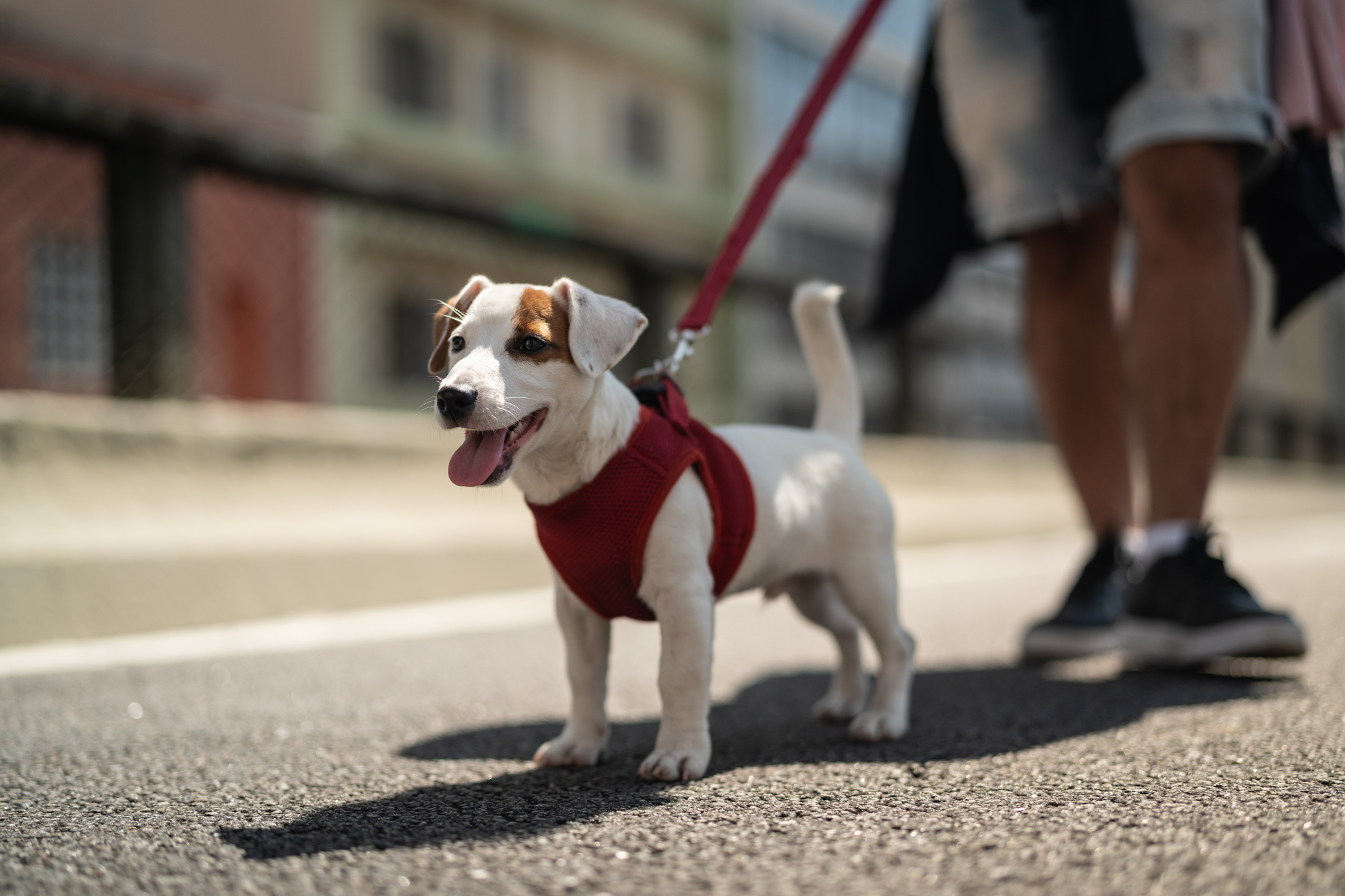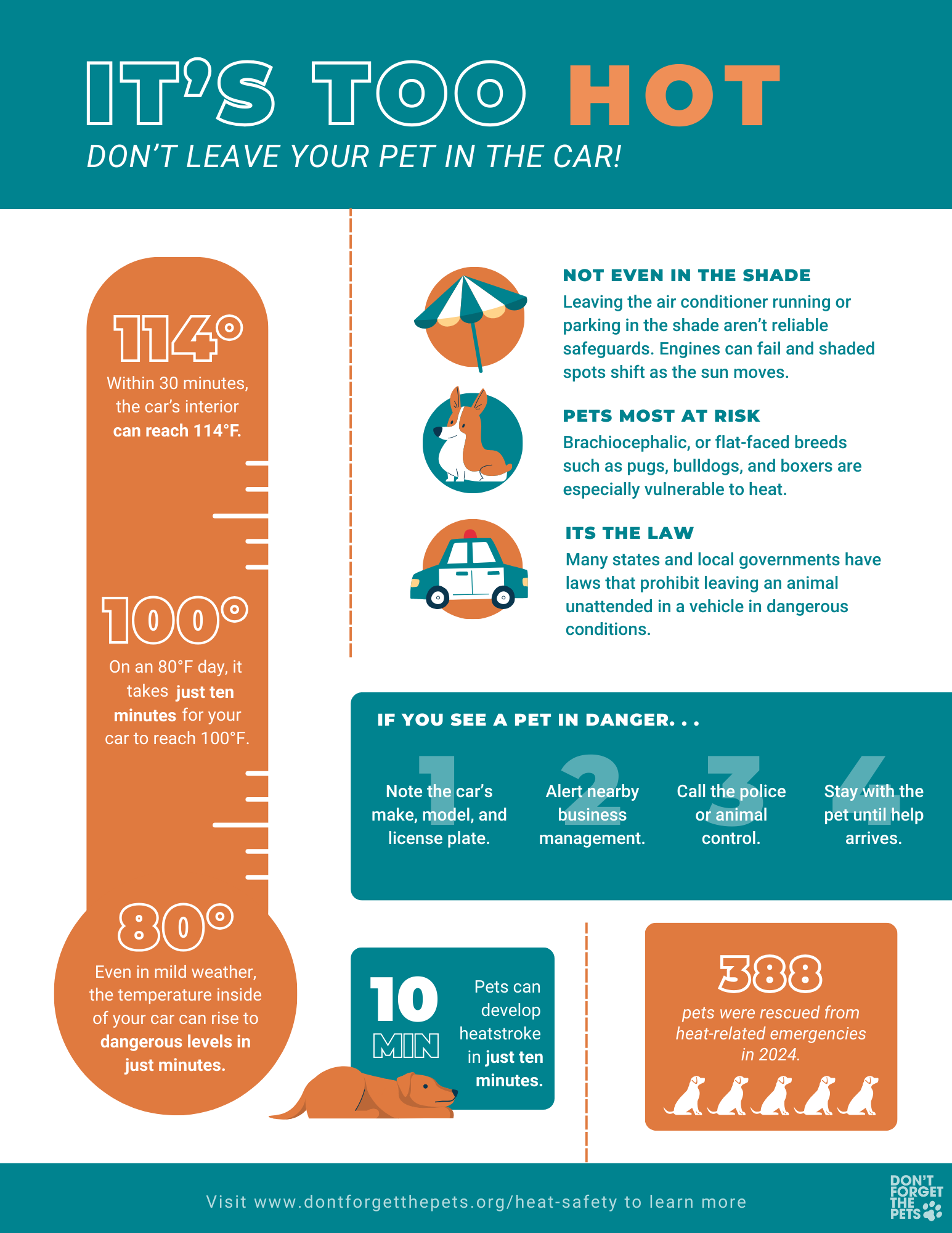Summer brings sunshine, outdoor adventures, and longer days—but for pets, high temperatures can quickly turn dangerous. Heat-related emergencies happen faster than many people realize, and the consequences can be deadly. Follow these tips to help ensure your furry friends stay safe and comfortable all season long.
Keep Pets Cool at Home
During the hottest parts of the day, the safest place for pets is indoors. If they must be outside, ensure they have constant access to fresh, cool water. Shade is essential, and tree cover or tarps provide better airflow than enclosed doghouses, which can trap heat. Cooling mats, vests, misting hoses, or even a small kiddie pool can also help keep pets comfortable.
Never Leave Your Pet in a Hot Car
On an 80° F day, the temperature inside your vehicle can reach 100° F in just ten minutes. After half an hour, the interior can soar to 114° F. Leaving the air conditioner running isn’t a reliable safeguard either—engines can fail, and the cooling system can shut off without warning.
If you see a pet in a hot car, act quickly. First, note the car’s make, model, and license plate number. If there are nearby businesses, ask them to make an announcement to find the owner. If the owner can’t be located, call 911. If the vehicle is locked and the animal is displaying signs of heat stress, you may have legal protection under Good Samaritan laws to break a window. Check the laws in your state and only use the minimum force necessary to retrieve the pet. Make sure to stay with the pet until help arrives.
Avoid Hot Pavement
While the air temperature might feel bearable, the ground beneath your pet’s feet can be dangerously hot. Asphalt and concrete can reach temperatures far higher than the air—up to 180° F in the peak of summer. At those temperatures, a dog’s paw pads can suffer burns in seconds.
Another serious but often forgotten danger is astroturf. A study conducted at Brigham Young University found that the surface temperature of synthetic turf was 37° F hotter than asphalt and 86.5° F hotter than natural grass when exposed to the same climate conditions.
Before walking your dog on asphalt, concrete, or turf, perform a “touch test” to make sure it’s safe. Place your bare hand on the ground for about seven seconds. If it’s too hot for you, it’s too hot for your pet. Stick to grassy areas or walk during the cooler morning or evening hours to avoid burns. In especially hot climates, protective booties may be worth considering.
Keep an Eye on Humidity
High humidity doesn’t just make people uncomfortable—it can also be deadly for pets. Dogs and cats cool themselves by panting, which allows moisture to evaporate from the saliva in their mouth and respiratory tract. When the air is heavy with moisture, this process becomes much less effective, and a pet’s body temperature can rise rapidly to dangerous levels. A dog’s temperature should never exceed 104° F; once it does, urgent action is needed to prevent heatstroke.
Recognize Signs of Heatstroke
Knowing the signs of overheating can save your pet’s life. Early symptoms may include heavy panting, a glazed look in the eyes, rapid heartbeat, and excessive thirst. As the condition worsens, pets may become lethargic, disoriented, or even collapse. Their gums or tongue may turn dark red or purple, and they may vomit or lose coordination.
Some pets are at higher risk than others. Brachiocephalic, or flat-faced breeds such as pugs, bulldogs, and boxers are especially vulnerable to heat. Very young or elderly pets, overweight animals, and those with heart or respiratory problems are also more prone to heat-related illness.
If you suspect your pet is suffering from heatstroke, move them to a shaded or air-conditioned space right away. Apply cool—not cold—water to their head, neck, and chest, or use cool, damp towels or ice packs in those areas. Offer small amounts of cool water or let them lick ice cubes. Stop cooling once their body temperature reaches 103 degrees, and get them to a veterinarian immediately. Even if they seem to recover, internal damage from heatstroke can appear hours or even days later.
Practice Pool Safety
Pools can be a great way for dogs to cool down, but they come with their own hazards. Not every dog knows how to swim, so it’s important to teach them gradually and always supervise them around water. Show them how to find the exit, and never allow them to drink from the pool as chlorine can be harmful. When the pool is not in use, keep gates closed or covers secured to prevent accidental falls.
The Bottom Line
Summer fun should be safe fun. By keeping pets cool, avoiding hot surfaces, recognizing the early signs of heat stress, and practicing pool safety, you can protect your companions from the hidden dangers of hot weather. Remember, if you feel hot, your pet likely feels even hotter. With a little care and preparation, you and your pet can enjoy the season together safely.
Danielle Works is the Community Engagement Manager for RedRover. With more than 10 years of experience in animal welfare, Danielle consults with shelters throughout the country to identify collaborative solutions for pets and owners in crisis. She holds a Bachelor’s degree in Biology from Willamette University in Salem, Oregon.




